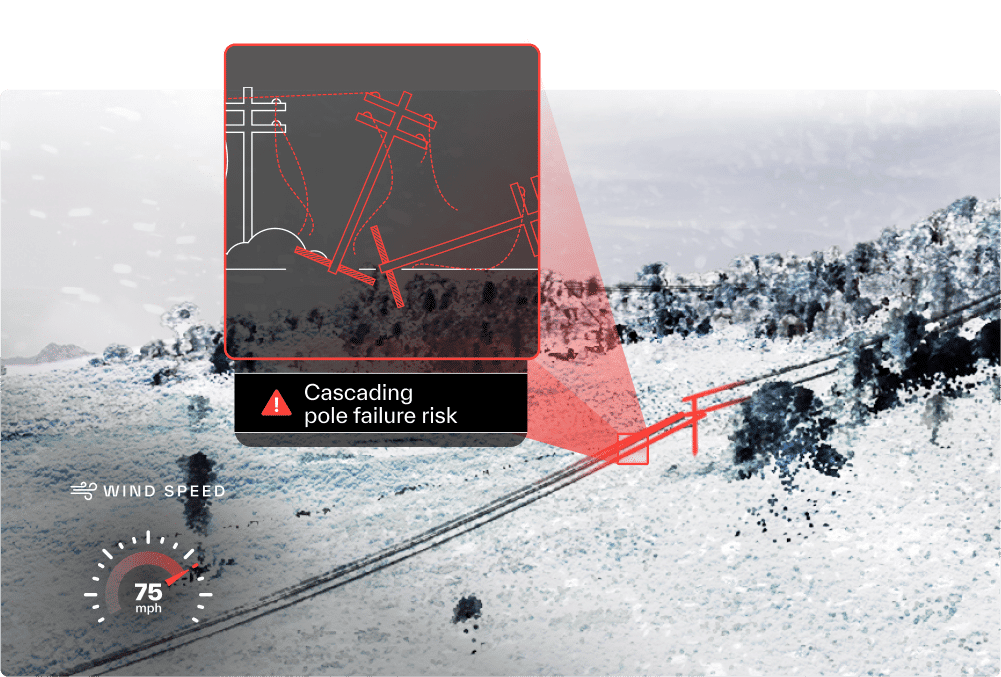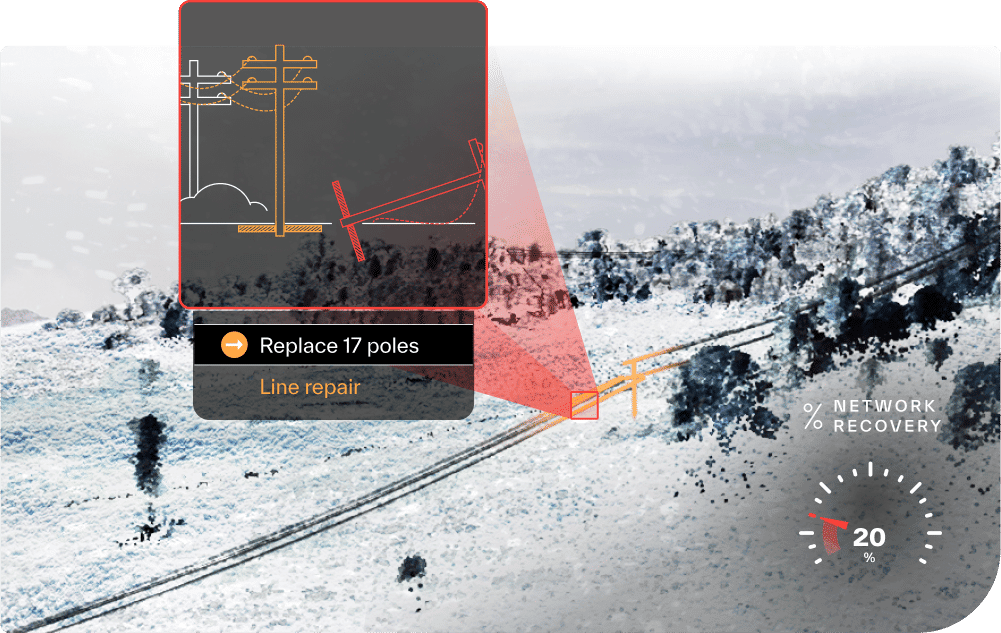Extreme wintry conditions can literally leave your customers out in the cold. With the right tools and preventive measures, you can thaw the impact of severe snow and ice on your network health and ultimately, your customers. Minimize outages by proactively surfacing vulnerable areas, simulating winter storm conditions and identifying the fastest, safest path to power restoration using a digital network model that will help you keep your network humming in any scenario.
- Simulate wintry weather to see where snow and ice is most likely to accumulate and cause structural damage to assets or lower line temperatures enough to freeze power supply
- Understand how a cascading pole failure scenario will play out based on accumulation so you can pre-empt situational awareness and stay a step ahead of equipment damage and outages
- Get the power flowing again as soon as is safely possible and apply learnings to the next coldsnap in the forecast so you can continuously improve reliability
Shield your network from snow and ice
Identify where snow and ice will be troublesome
Pinpoint where snow and ice are most likely to be problematic by testing asset characteristics such as span length and tension and weather conditions such as snowfall and ice accumulation across different elevations in your network. Use your digital network model to simulate asset behaviors and weather conditions to predict where equipment damage, power outages, and treacherous conditions for your team and community are most likely. Take steps to prevent danger and damage before they occur, and understand what kinds of grid hardening initiatives are best suited to the nuances of your network.

Know where to direct your attention next
Know exactly where the snow is piling up and where ice is forming, and how your network is most likely to respond — whether it’s an outage due to cascading pole failure or line temperature. Maintain situational awareness as winter storms progress so that you can continually assess the damage and impending risks and won’t miss a beat when it’s time to mobilize recovery efforts. Keep emergency response crews, field teams, and local agencies on the same page about what’s happening, where, and what you can expect next.

Heat up your network as fast as possible
Reduce the time to safely get the power back on for as many customers as possible. Especially where snow accumulation levels are high, prioritize repairs and power restoration based on the areas your field teams can physically access. Use your digital network model to pull a data-driven snapshot of damage incurred so that you can accelerate the path to restoration, repair, and recovery.



